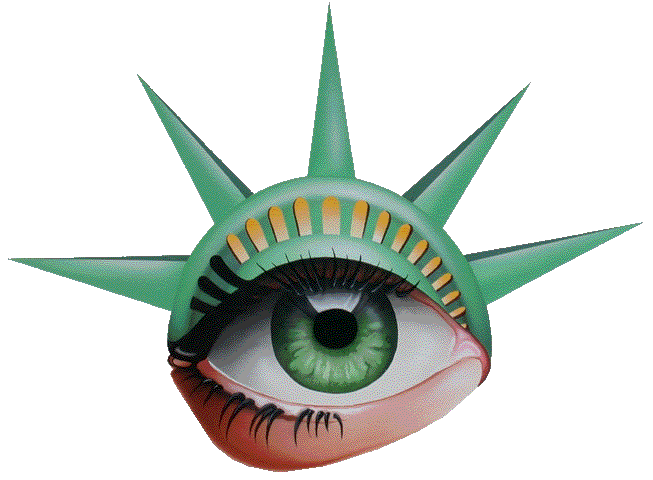What Does Farsighted Mean? The Ultimate Guide
Hey there, fellow vision enthusiasts! Let’s tackle a question we’ve all mumbled while squinting at a restaurant menu or struggling to read the fine print on a pill bottle: What does farsighted actually mean? And more importantly—how do we fix it without looking like we’ve raided our grandma’s reading glasses collection? (No judgment if you have, though. Retro frames are kinda cool.)
At Liberty Laser Eye Center in Vienna, Virginia, we spend our days geeking out over eyeballs and helping folks ditch their dependence on glasses or contacts. So grab a coffee, sit back, and let’s break down farsightedness—or as we pros call it, hyperopia—in a way that won’t put you to sleep.
What Is Farsightedness? (And Why Can’t I Read This Text?)
Farsightedness isn’t just about seeing distant objects clearly. In fact, it’s the opposite of what most people assume. If you’re farsighted:
- Close-up objects (like your phone or a book) look blurry.
- Distant objects (like road signs or TV subtitles) stay sharp—until your eyes get tired.
- Your eyes work overtime to focus, leading to headaches or eye strain after reading or screen time.
Think of your eye like a camera. If the lens isn’t curved enough or your eyeball is too short, light focuses behind the retina instead of directly on it. The result? Blurry near vision. It’s like your eyes are stuck in “landscape mode” when you need “macro mode.”
Fun fact: Farsightedness often gets confused with presbyopia (the “over-40 blur”), but they’re not the same. Presbyopia is caused by stiffening lenses due to aging, while hyperopia is usually a genetic shape issue.
Farsighted vs. Nearsighted vs. Astigmatism: The Trifecta of Blurry
Let’s clear up the confusion (pun intended):
- Farsightedness (Hyperopia): Struggle with near tasks.
- Nearsightedness (Myopia): Can’t see distant objects (but your phone is crystal clear).
- Astigmatism: Blurry vision at all distances due to a misshapen cornea.
And then there’s keratoconus, where the cornea thins and bulges into a cone shape—a whole other beast we treat at Liberty Laser Eye Center with procedures like corneal cross-linking.
“Do I Need Glasses Forever?” Treatment Options for Farsightedness
Glasses and contacts are classic fixes, but let’s talk about permanent solutions. (Because losing your specs in the ocean isn’t a vibe.)
Laser Eye Surgery: Not Just for Nearsighted Folks!
Yes, LASIK and Advanced PRK aren’t just for the myopia crew. These surgeries reshape your cornea to redirect light properly onto the retina. At Liberty, we use wavefront analysis and topography-guided LASIK to customize treatments for your eyeballs.
- PresbyLASIK Surgery: Perfect for anyone over 40 dealing with both hyperopia and presbyopia. It’s like a two-for-one deal.
- Dry Eye Treatment: Because nobody wants scratchy eyes post-surgery. We’ve got your back (and your corneas).
But Wait—Does LASIK Work for Severe Farsightedness?
Success rates are sky-high for mild to moderate hyperopia. For extreme cases, we might recommend implantable lenses or refractive lens exchange. Pro tip: Always choose a best LASIK surgeon (hi, that’s us) for a thorough evaluation.
Why Liberty Laser Eye Center? (Hint: We’re Not Just “Another Clinic Near DC”)
Look, we get it—searching for “Lasik doctors near me” or “best Lasik surgeon in Washington DC” can feel overwhelming. Here’s why our Vienna, Virginia clinic stands out:
- We’re Laser Nerds: Our team lives for cutting-edge tech like topography-guided LASIK and corneal cross-linking.
- Transparent Pricing: Affordable doesn’t mean “cheap.” We’ll break down the cost upfront—no surprises.
- Rave Reviews: Don’t take our word for it. Check out our reviews from folks who’ve ditched their readers for good.
Plus, we’re just a short drive from Washington DC. No need to trek across the country for top-tier eye surgery types.
LASIK Recovery: Netflix and Chill (Seriously)
Worried about downtime? Most of our patients binge their favorite shows within 24 hours. Here’s the lowdown:
- Day 1: Rest, use medicated drops, avoid rubbing your eyes.
- Week 1: No swimming or makeup (sorry, waterproof mascara lovers).
- Month 1: Enjoy your new 20/20 vision—or better!
FYI, annual eye exams post-surgery keep everything in check. Think of them as tune-ups for your eyeballs.
Farsightedness FAQs: Your Burning Questions, Answered
Let’s tackle the questions we hear daily at Liberty:
| Question | Answer |
|---|---|
| Can farsightedness get worse? | Yep, especially with age. Regular checkups catch changes early. |
| Is LASIK painful? | Nope! We use numbing drops. You’ll feel pressure, not pain. |
| What’s the best age for LASIK? | Most folks are good candidates from 18–60. We’ll confirm during your consult. |
| Why choose Liberty over other clinics? | We blend expertise, tech, and actual care—no factory vibes here. |
Wrapping Up: Your Clear Vision Awaits
So, what does farsighted mean? In short: Your eyes rock at distance but flunk close-ups. The good news? You’ve got options—from trendy glasses to life-changing laser surgery.
If you’re in Washington DC or Northern Virginia, swing by Liberty Laser Eye Center in Vienna. We’ll chat about Lasik recovery, affordable plans, and whether you’re a candidate for PresbyLASIK or Advanced PRK. Because let’s face it: Life’s too short to squint.
Ready to see the world in HD? Contact us today—and tell ’em your favorite eye pun. (We’re suckers for a good “Iris you the best” joke.) 😉

